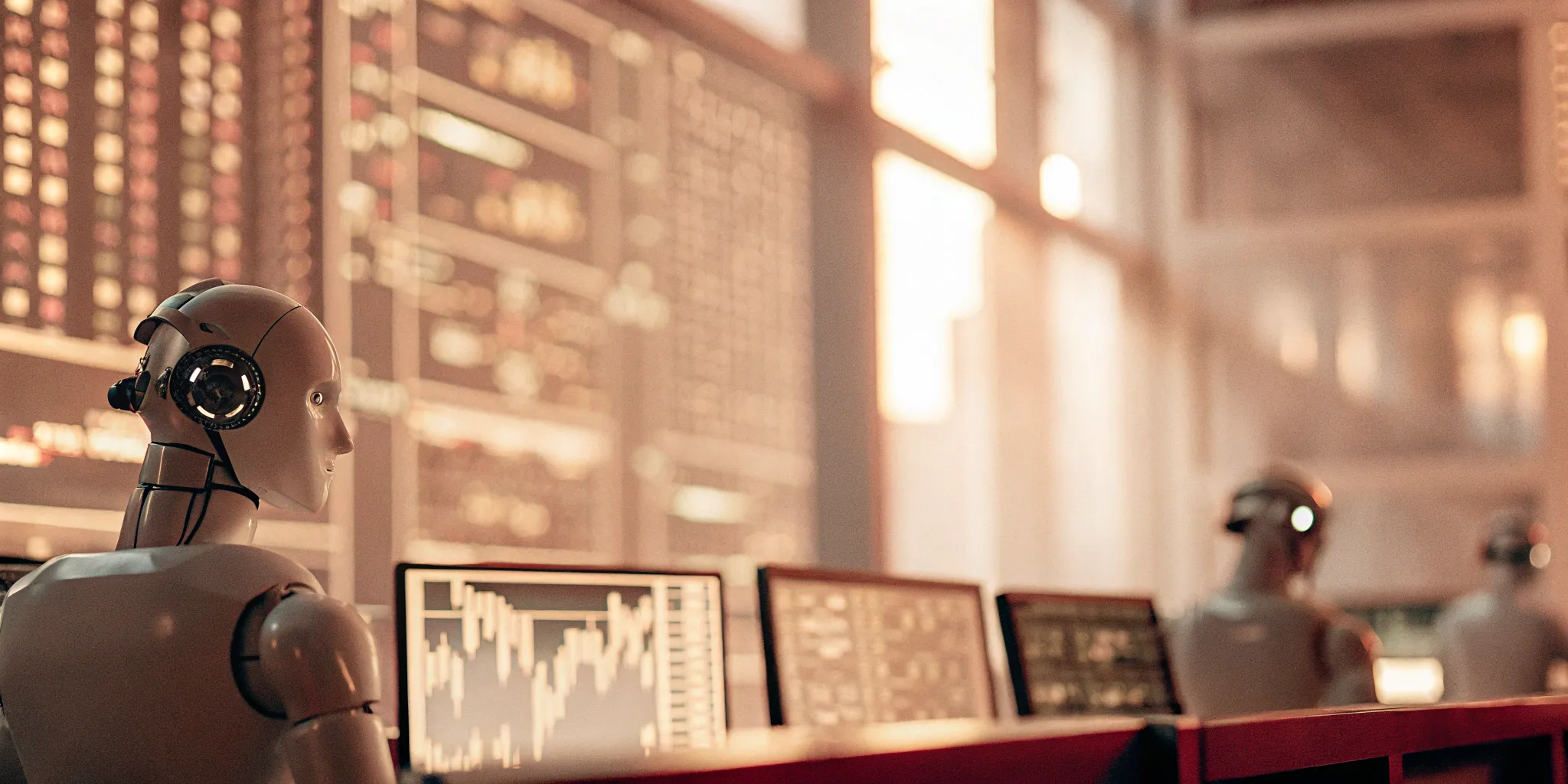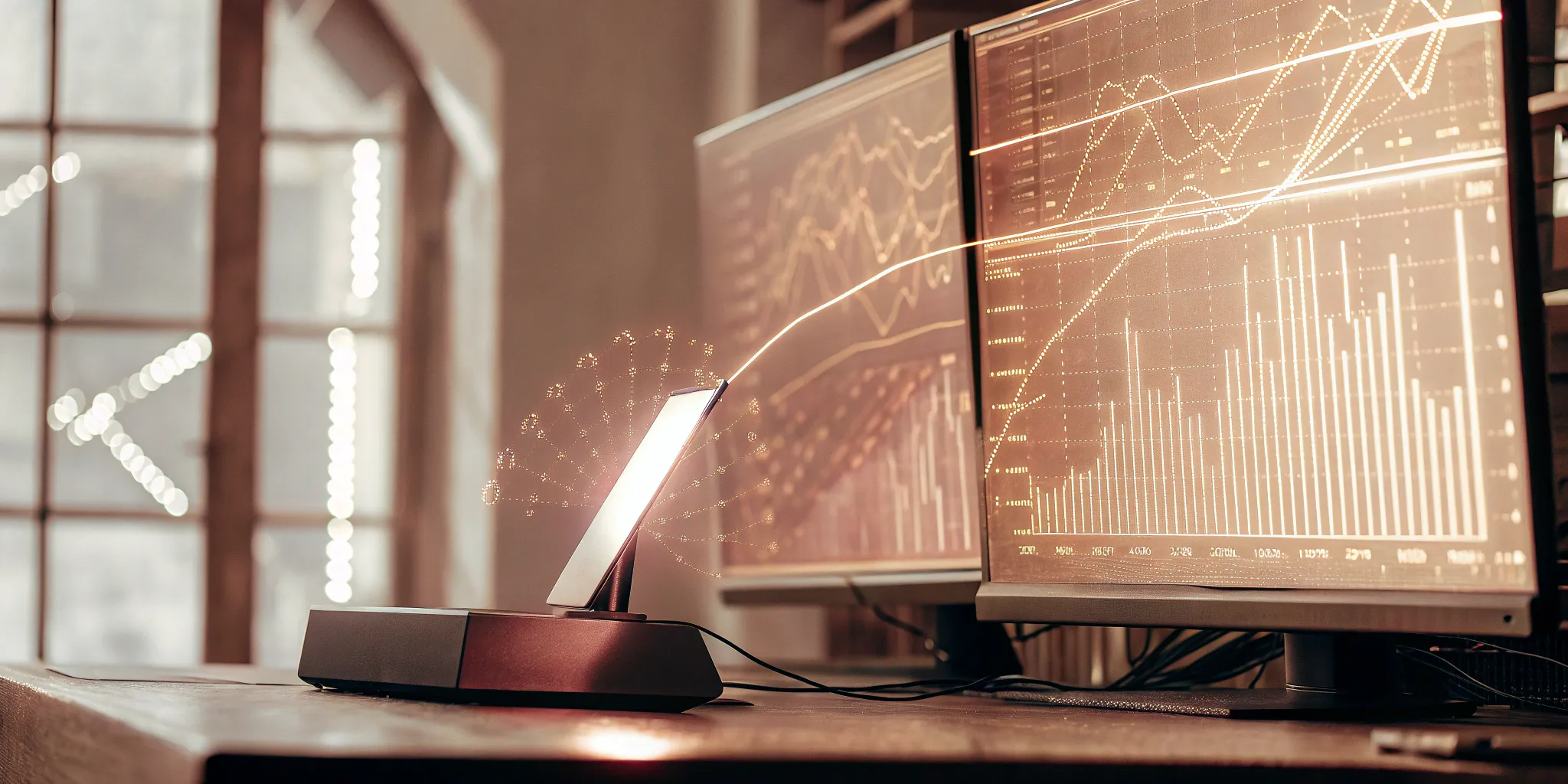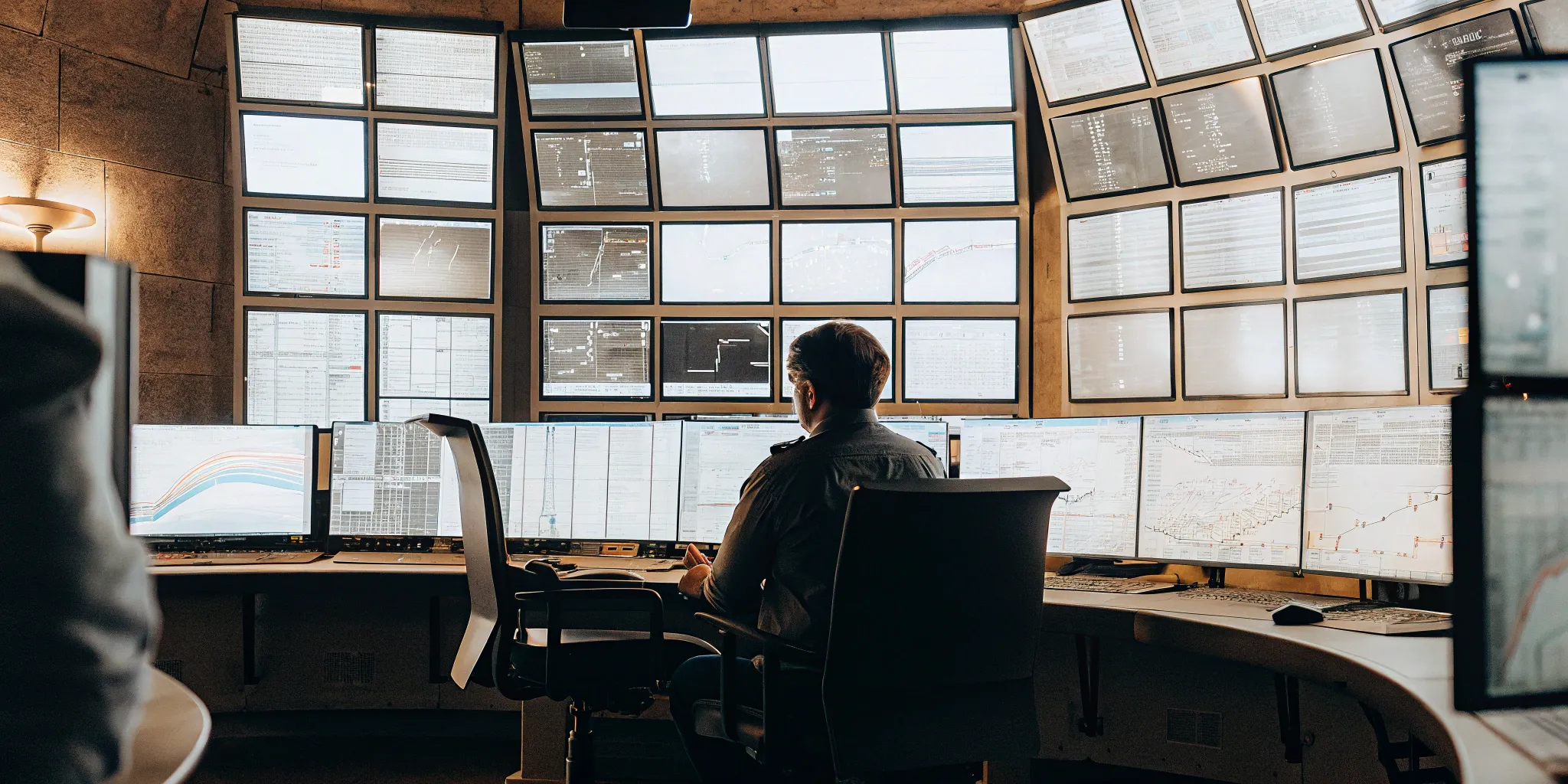Tired of staring at charts, second-guessing your trades, and feeling like you’re always one step behind the market? AI bots for trading offer a compelling alternative, promising to automate your trading strategies and potentially enhance your returns. But before you jump on the bandwagon, it’s essential to understand what these bots are, how they work, and the potential risks involved. This guide provides a practical, no-nonsense look at the world of AI trading bots, demystifying the technology and empowering you to make informed decisions. We’ll explore the core functionalities of these bots, the different types of AI algorithms they employ, and the key features that distinguish the best from the rest. From understanding pricing and performance metrics to evaluating user experience and security measures, this guide will equip you with the knowledge you need to navigate the exciting world of AI-powered trading.
Key Takeaways
- AI can bring speed and objectivity to your trading: Automated tools execute trades faster and more efficiently than humans, minimizing emotional biases. Remember that markets are unpredictable, and AI doesn’t guarantee profits.
- Finding the right bot takes research: Match the bot’s features to your goals, risk tolerance, and trading style. Prioritize verifiable performance data, a user-friendly design, strong security, and customization options. Use free trials and demo accounts to test platforms before investing.
- Stay engaged and keep learning: Even with automation, your involvement matters. Monitor performance, understand the bot’s logic, and stay updated on market dynamics. Community resources and educational content can help you maximize your success with AI trading.
What are AI Trading Bots?
AI trading bots are software programs that use artificial intelligence to automate buying and selling in financial markets. They execute trades faster and more objectively than a human trader, removing emotional decision-making. Think of them as tireless digital assistants designed to analyze market conditions and make trades 24/7.
Definition and Basic Functionality
AI-powered trading solutions automate the entire trading process. They analyze market data, identify opportunities, and execute trades based on pre-programmed instructions or learned patterns. These bots can monitor multiple markets simultaneously, reacting to changes in real-time. This eliminates the need for constant human oversight, freeing up your time and potentially increasing your trading efficiency. You can learn more about these solutions in FN Capital’s guide to AI-powered trading.
How AI Trading Bots Work
AI trading bots use artificial intelligence to analyze vast quantities of market data and identify potential trading opportunities. They use complex algorithms to analyze historical price movements, trading volume, and other relevant factors to predict future market behavior. These systems execute trades efficiently, often making thousands of transactions per month. This data-driven approach helps minimize human bias, leading to more objective trading decisions. For more information on how these bots work, you can explore resources like Golden Owl’s review of AI Stock Trading Bots.
Types of AI Algorithms Used in Trading
AI trading bots employ a variety of algorithms, each with its own strengths and weaknesses. Some common examples include machine learning models, which allow the bot to learn from past data and improve its performance. Other algorithms focus on specific trading strategies, such as arbitrage or trend following. The choice of algorithm depends on the specific goals and risk tolerance of the trader. More information on the types of AI algorithms used can be found in FN Capital’s investor’s guide.
Leading AI Trading Bots
Several AI trading bots are available, each with its own strengths and weaknesses. Here’s a look at some of the leading platforms:
FN Capital’s FAST AI
FN Capital’s FAST AI is designed for hands-free forex trading, leveraging a proprietary high-frequency execution system. It focuses on the EUR/USD pair for maximum liquidity and uses a dynamic risk management tool called DART. This AI-driven system continuously optimizes position sizes and stop-losses, aiming for consistent returns. You can explore FN Capital’s approach to AI-powered trading solutions.
Cryptohopper
Cryptohopper is a popular choice for cryptocurrency enthusiasts. This platform allows 24/7 automated trading, even for users without coding experience. It offers a range of features, from portfolio management and trailing stop-losses to social trading.
3Commas
3Commas caters to more experienced traders who want to design and manage their own AI trading bots. The platform supports automated strategies across multiple exchanges and offers tools for backtesting and performance analysis. Learn more about analyzing AI trading bot performance on their blog.
TradeSanta
TradeSanta focuses on automated trading for cryptocurrency markets. It offers a user-friendly interface combined with features like smart trading and automated strategies, making it suitable for both beginners and experienced traders. TradeSanta offers more information on their website.
Trality
Trality provides a platform for creating and deploying trading bots using Python. It offers a code editor for advanced users and a marketplace for pre-built strategies, catering to a wide range of trading skills. If you’re interested in building your own bots, you can explore Trality.
Pionex
Pionex simplifies automated trading by offering built-in trading bots directly on its cryptocurrency exchange. Users can access various automated strategies, including grid trading and arbitrage, without needing extensive technical knowledge. Explore Pionex’s cryptocurrency exchange.
Key Features of AI Trading Bots
AI trading bots offer a range of features designed to streamline and enhance your
Algorithmic Trading Capabilities
At their core, AI trading bots automate the trading process. Sophisticated algorithms analyze market data and execute trades based on predefined criteria or learned patterns. This removes emotional decision-making, allowing for more objective and consistent trading.
Customizable Strategies
Many bots offer customizable strategies, allowing you to tailor the bot’s actions to your preferred trading style and risk tolerance. This customization is a significant advantage, enabling you to fine-tune your approach as market conditions evolve.
Backtesting and Optimization
Backtesting lets you test your strategies against historical market data. This helps you evaluate the potential effectiveness of your approach and identify areas for improvement before risking real capital. Optimization tools further refine your strategies, maximizing potential returns while minimizing risk.
Risk Management Tools
Effective risk management is essential for successful trading. AI bots often incorporate risk management tools that automatically adjust position sizes, set stop-loss orders, and monitor overall portfolio exposure. These features help protect your capital during market volatility.
Trading Platform Integration
Seamless integration with your preferred trading platform is key. Look for bots compatible with the platforms you already use, ensuring a smooth and efficient workflow.
User Interface and Accessibility
A user-friendly interface is essential, especially for newcomers to automated trading. Choose a bot with an intuitive design and clear navigation, making it easy to monitor performance, adjust settings, and understand the bot’s actions.
Real-Time Market Analysis
AI bots excel at analyzing vast amounts of data in real time. They process market data, news sentiment, and other relevant information to identify potential trading opportunities and make informed decisions.
Automated Strategy Development
Some advanced AI bots can even assist with strategy development. By analyzing market trends and historical data, these bots can suggest potential trading strategies or refine existing ones, further automating your trading process.
Pricing and Performance
AI trading bots can be a fantastic tool, but picking the right one means understanding how different bots are priced and how to evaluate their performance. Let’s break down what to look for.
Subscription Plans
Just like your favorite streaming services, AI trading bots often come with different subscription plans. Some offer free versions with limited features, a good starting point for testing the waters. However, to unlock a bot’s full potential, you’ll likely need a paid subscription. These can range from basic plans to premium packages with advanced features and support.
Commission Structures
Beyond subscription fees, it’s important to understand any commission structures. Some bots might charge a percentage of your profits, while others might have a flat fee per trade. The cost of a trading bot can vary widely, depending on its complexity, the markets it supports, and whether it’s a one-time purchase or subscription-based.
Free Trials
Many reputable bot providers offer free trials, giving you a chance to test-drive the platform before committing to a paid plan. This is a great way to get a feel for the bot’s interface, features, and overall performance. Some even offer access to a community of traders, providing valuable forums and networking opportunities.
Evaluating Cost-Effectiveness
When evaluating cost-effectiveness, think beyond the sticker price. Consider the bot’s features, the potential return on investment, and the level of support provided. Factors like customization options, the range of assets supported, and the availability of premium tools influence the overall value.
Understanding Performance Metrics
Don’t get blinded by flashy marketing promises. Focus on key performance metrics like win rate, profit factor, and maximum drawdown. A truly effective algorithm balances returns with risk management, consistency, and efficiency. Check out this guide for a helpful overview of important metrics.
Importance of Backtesting Results
Backtesting allows you to see how a bot would have performed in the past, giving you valuable insights into its potential. While past performance isn’t a guarantee of future success, it’s a crucial step in evaluating a bot’s reliability.
Consistency of Trading Signals
Consistent trading signals are key to long-term success. Look for a bot that generates reliable signals across different market conditions. A consistently performing bot will help you avoid emotional trading decisions and stick to a well-defined strategy.
Advantages and Challenges of AI Trading Bots
AI trading bots have become increasingly popular, promising to revolutionize how we approach financial markets. But like any technology, they come with their own set of advantages and challenges. Let’s take an honest look at both sides.
Benefits of AI-Powered Trading
AI’s strength lies in its ability to process vast amounts of data quickly and objectively. A human trader might analyze a handful of charts and news feeds, while an AI can consider thousands of data points simultaneously. This allows for faster, more informed trading decisions, often identifying subtle market patterns a human might miss. This speed and objectivity give AI an edge, especially in today’s fast-moving markets where split-second decisions can make all the difference. It’s no surprise that a significant portion of US trading volume is already driven by algorithms, estimated at around 70% according to Golden Owl. AI can also monitor markets 24/7, taking advantage of opportunities whenever they arise.
Potential Drawbacks and Risks
While the potential of AI trading is exciting, it’s crucial to acknowledge the risks. Setting up and configuring these bots can be complex, requiring a certain level of technical expertise. Not all AI trading bots are created equal, and unfortunately, scams do exist. A healthy dose of skepticism is essential, especially when encountering promises of guaranteed returns. As a Reddit discussion highlights, some simpler bots rely heavily on luck, and consistent profitability isn’t guaranteed. Finally, remember that markets are inherently unpredictable. Even the most sophisticated AI can’t foresee every market event, and unexpected volatility can still impact results.
Overcoming Common Obstacles
One of the best ways to mitigate the risks of AI trading is through active human oversight. Don’t just set it and forget it. Regularly monitor your bot’s performance, understand its trading logic, and be prepared to adjust your strategies. Thorough research and a realistic understanding of your own resources and expertise are also key. Don’t fall for unrealistic promises. Instead, focus on finding a reputable provider with a proven track record and transparent trading strategies.
Regulatory Considerations
The legality of AI trading bots typically hinges on compliance with existing financial regulations. In most jurisdictions, these bots are perfectly legal as long as they operate within established rules and don’t engage in market manipulation. It’s always a good idea to research the specific regulations in your region to ensure you’re operating legally. Pocket Option offers insights into the legal landscape surrounding automated trading.
Transparency in Decision-Making
A major advantage of AI-powered trading tools is their potential to enhance transparency. By providing clear insights into market analysis and trade execution, these tools can empower investors to make more informed decisions. FN Capital emphasizes transparency in its AI-driven approach, offering users a deeper understanding of the factors influencing their trades.
Adapting to Market Changes
Markets are constantly evolving, and a successful AI trading bot needs to adapt. This requires robust technology, access to high-quality real-time data, and a commitment to ongoing development. The competitive landscape of algorithmic trading is constantly shifting, and continuous improvement through machine learning is essential. AlgosOne highlights the importance of adaptive learning in enabling AI bots to refine their predictions and stay ahead of market changes.
Choosing the Right AI Trading Bot
Not all AI trading bots are created equal. Finding the right one requires careful consideration of your goals, risk tolerance, and trading style. Here’s a breakdown of key factors to consider:

Define Your Trading Goals
Before you even start browsing bots, define your trading goals. Are you looking for a hands-off, passive income stream? Or are you a more active trader seeking to enhance your existing strategies? Your objectives will significantly influence the type of bot that best suits your needs. Some bots excel at high-frequency trading, while others focus on long-term portfolio management. Knowing what you want to achieve will help you narrow your search. Also, consider your budget. AI trading bots come with various pricing models, so choose one that offers good value for the features provided.
Evaluate Bot Performance and Reliability
A flashy interface doesn’t guarantee profits. Look beyond marketing hype and focus on verifiable performance data. A truly effective algorithm balances returns with risk management, consistency, and efficiency. Scrutinize backtested results and, if possible, examine live trading performance. Transparency is key. A reputable bot provider should readily offer verified performance metrics. Remember, past performance isn’t a guarantee of future success, but it offers valuable insights into the bot’s capabilities.
Consider User Experience and Support
Even the most sophisticated AI bot is useless if you can’t understand how to use it. Prioritize a user-friendly interface and excellent customer support. When starting with AI for trading, focus on a single security to learn the bot’s functionality and software interface. A clear dashboard, intuitive controls, and readily available support can make all the difference, especially when you’re just starting. Look for providers that offer comprehensive documentation, tutorials, and responsive customer service.
Check Security Measures
Security is paramount when dealing with financial technology. Ensure the bot you choose employs robust security measures to protect your funds and personal information. Look for features like two-factor authentication, encryption, and secure API connections. Research the provider’s security track record and reputation within the industry. Don’t hesitate to ask questions about their security protocols and data protection policies. Trading bot pricing varies significantly based on complexity, features, and supported markets. Choose a bot that prioritizes security and gives you peace of mind.
Start with a Demo Account
Before committing real capital, test-drive the bot with a demo account. This allows you to familiarize yourself with the platform, experiment with different settings, and evaluate the bot’s performance in a risk-free environment. A demo account is an invaluable tool for learning the ropes and gaining confidence before trading with real money. Some bots offer access to trader communities, providing forums, shared strategies, and networking opportunities.
Explore Customization Options
One-size-fits-all rarely works in trading. Look for a bot that offers customization options to align with your specific trading style and risk tolerance. The ability to adjust parameters, define entry and exit rules, and tailor the bot’s behavior to your preferences can significantly impact your results. Customization features often influence pricing, along with the range of assets supported and any premium tools included. A customizable bot empowers you to take control and fine-tune your trading strategy.
Leverage Community and Support Resources
A strong community can be a valuable asset. Access to forums, educational materials, and peer support can enhance your learning and help you get the most out of your AI trading bot. The value of these community resources can be reflected in the bot’s price. Connecting with other traders can provide insights, tips, and support as you navigate automated trading.
Related Articles
- AI Trading Bots: An Investor’s Guide to Automated Trading – FN Capital
- Fully Automated AI Trading: Grow Your Wealth with Software – FN Capital
- AI-Powered Trading Solutions: An Investor’s Guide
- Futures Trading Algorithms: The Ultimate Guide – FN Capital
- Understanding AI Trades: A Practical Guide for Investors – FN Capital
Frequently Asked Questions
Is AI trading suitable for beginners?
Absolutely! Many AI trading bots offer user-friendly interfaces and automated features that make them accessible to newcomers. Even if you have limited market experience, you can leverage AI to execute trades and manage your portfolio. However, it’s always recommended to start with a demo account and thoroughly research any bot before investing real money. Focus on understanding the basics of trading and the specific strategies employed by the bot.
What are the risks of using AI trading bots?
While AI trading offers significant advantages, it’s important to be aware of the potential risks. No trading strategy is foolproof, and market volatility can still impact your results. Additionally, the complexity of some bots can be challenging for beginners. It’s crucial to choose a reputable provider, thoroughly research the bot’s features, and monitor its performance regularly. Be wary of unrealistic promises and prioritize a platform with transparent trading strategies and robust risk management tools.
How much do AI trading bots cost?
Pricing varies widely depending on the bot’s features, the markets it supports, and the provider. Some offer free versions with limited functionality, while others operate on subscription models with tiered pricing plans. Some bots may also charge commissions based on your trading volume or profits. It’s essential to carefully evaluate the pricing structure and ensure it aligns with your budget and trading goals. Look for free trials or demo accounts to test the platform before committing to a paid subscription.
How do I choose the right AI trading bot?
Selecting the right bot starts with defining your trading goals and risk tolerance. Consider your trading style, preferred markets, and the level of control you want over your strategies. Look for a bot with a user-friendly interface, robust security measures, and reliable customer support. Thoroughly research the bot’s performance metrics, including backtested results and live trading data if available. Don’t hesitate to leverage community resources and forums to gather insights from other users.
What is the role of human oversight in AI trading?
Even with automated trading, human oversight remains crucial. While AI bots can execute trades and analyze data autonomously, they are not infallible. Regularly monitor your bot’s performance, understand its trading logic, and be prepared to adjust your strategies as market conditions change. AI should be viewed as a tool to enhance your trading decisions, not replace your judgment entirely. Stay informed about market trends and news that could impact your investments.





